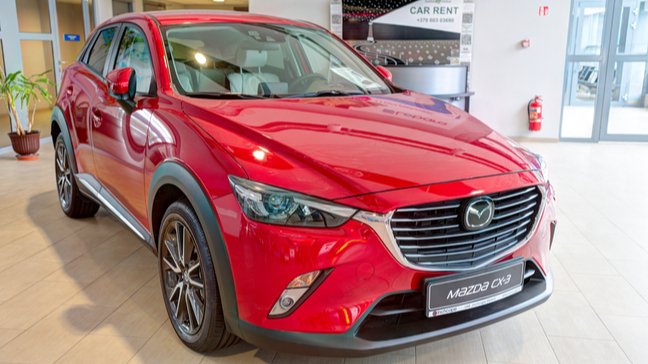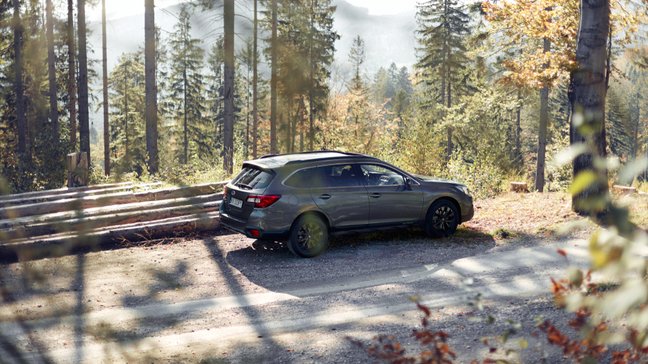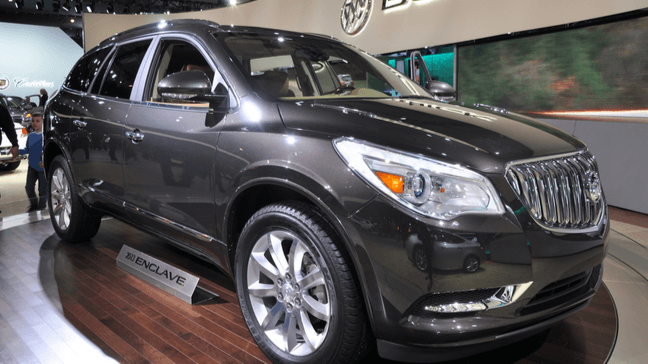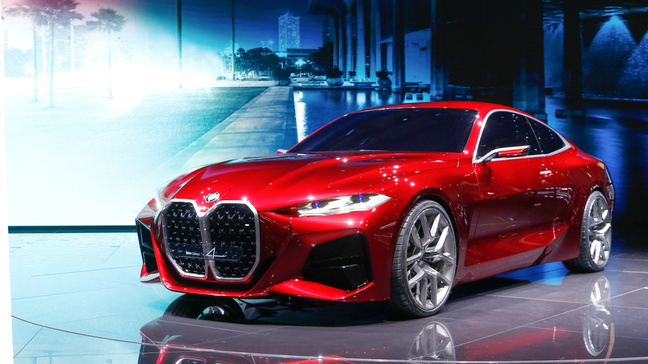Back in 2011, I called up my insurance company to discuss rates for the different cars on my shopping list. For the Lexus sedan I was eying, the annual cost would be $2,200. Not bad at all, considering my shameful record at the time.
However, as a red-blooded American male, I was also coveting the Camaro SS. How much to insure that, I asked?
“6,700, sir”
“6,700 what? Yen?”
Glenda at Geico didn’t even elicit a titter. Perhaps she had grown weary from years of giving Camaro owners the bad news.
I was amazed that two cars with similar price tags and similar horsepower could vary so much in insurance premiums. That’s why it’s so critical to factor in the cost of insurance when you’re car shopping; you don’t want any surprises.
So how much can having cheap auto insurance save you in the long run? Why do similar cars sometimes cost three times the price to insure? What are the overall cheapest cars to insure, and conversely, which cars are surprisingly expensive?
Why is having cheap auto insurance so important?

There are two types of costs associated with buying and owning a car:
- Costs you pay once – Sticker price, sales taxes, and dealer fees.
- Costs you never stop paying – Gas, insurance, maintenance, repairs, tires, etc.
Most car shoppers tend to focus on the prices you only pay once. They negotiate hard for the lowest possible out-the-door price or monthly payment and ride off victorious into the sunset.
However, forgetting about the costs of ownership is a big financial mistake. Oftentimes, the cheaper car to buy is the pricier car to own.
For example, a used 2015 Mercedes-Benz C300 costs $2,000 less than a 2015 Lexus IS 350. It’s a bit more prestigious, it’s prettier, and it has a better interior. All-in-all, seems like the obvious choice.
However, over five years, the C-Class will cost over $5,000 more to own and maintain. So you need to ask yourself: is a fancier badge and prettier face worth $5,000 more?
As a part-time car broker, I can’t think of a link I share more often than The Edmunds True Cost to Own® (TCO®). The tool lets you see not just a fair asking price, but what the car will really cost you over five years. I use it constantly to dissuade clients from buying unreliable cars, and conversely, to sell more reliable cars that cost more upfront and magnitudes less over time.
As you can see, in third place behind repairs and maintenance is the cost of insurance. Insurance is the “silent killer” that can dictate which cars are truly cheaper than others. For example, you may find that a Mustang and a Camaro are similar in cost of ownership, but the Camaro costs $312 more every six months in insurance. Eh, that’s not much, and you do like the Camaro interior better.
But over five years, that $312 becomes nearly $4,000. If you keep it for 10 years, that’s nearly $8,000 difference. Are the aspects of the Camaro you like more worth $8,000 more?
Cheap auto insurance should be a top consideration
In my other pieces, I’ve recommended that you make a list of your top 10 favorite cars, then narrow that list down to five. The two best ways to do that are to:
- Go on test drives.
- Get insurance quotes.
Getting quotes from five carriers for 10 cars = 50. That total may sound incredibly tedious, but it’ll take less than half an hour with an insurance aggregator.
Why do similar cars have such different insurance costs?
If a Camaro and a Lexus IS cost about the same and have similar horsepower, why would the Camaro cost three times as much to insure?
It all comes down to risk. Broadly speaking, every auto insurance company has a complex algorithm that bases your quote on the following two stats:
- How likely are you to file a claim?
- How expensive is that claim likely to be?
Naturally, your personal driving record factors heavily into your quote. But even if you drive like your high school driving instructor was riding shotgun, you’ll still pay out the wazoo to insure certain cars due to these other major factors:
Cost of repairs and replacement
Regardless of your driving record, you’ll generally pay more to insure a Mercedes than a Chevy. That’s because Mercedes parts and labor are so expensive, as is the cost of replacing the vehicle.
Theft rates
Thefts are a headache for insurance companies because it means they have to replace the entire car. Therefore, commonly stolen cars can cost more to insure.
While Porsches and Range Rovers certainly get stolen sometimes, according to MotorTrend the most stolen cars in America are actually the Ford F-150, the Honda Civic, and the Toyota Camry.
Frequency of claims
Remember when I said my quote for a Lexus IS was $2,200 for the year, and a Camaro was $6,600? On that same call, just for fun, I asked Glenda at Geico what it would cost to insure a 2009 Nissan GT-R. You know, the six-figure track weapon faster than most Lamborghinis.
My quote? $2,200.
The reason, she explained, was that they simply didn’t ever get claims from GT-R owners. Presumably, they never drove them, or if they did, only very carefully, and probably only to the track where they had separate track insurance.
This explains why some sports cars are cheaper to insure than their docile counterparts; owners baby them, or only drive them as weekend toys.
The top five cheapest cars to insure overall
Mazda CX-3

With an average annual premium hovering between $1,300 and $1,350, Mazda’s tiny, gorgeous crossover is astoundingly cheap to insure. I’d say it’s because the car is affordable, well-built, and positively filled with safety tech.
I’m personally a bigger fan of its larger, more practical sibling the CX-5, which is also super cheap to insure. But there’s no beating the cheap cost of ownership of its little bro.
Honda CR-V
If you ever rode to soccer practice as a kid, you probably rode in a Honda CR-V. The prototypical mom-mobile nearly tops the list of most affordable cars to insure likely due to its safety features and docile drivers. You’ll pay as low as $1,350 for the year.
It’s not the most fun or exciting crossover to drive, but you can always spend your insurance savings at Dave & Busters to make up the difference.
Jeep Wrangler
I was pretty surprised to see the Jeep Wrangler on anyone’s Top 10 Cheapest To Insure list, let alone the top three. As objectively fun as they are, Wranglers are a bit old-fashioned, lacking many modern safety features. They’re also frequently driven by teenagers and/or offroad, neither of which sings of “low-risk” to insurance companies.
And yet, they cost just around $1,400 per year to insure. Perhaps it’s because they’re built like a brick house, and their owners see scrapes and dings as badges of honor, not reasons to file a claim.
Subaru Outback

In the Midwest, it’s hard to tell the difference between a Subaru Dealership and a Trader Joe’s parking lot. Both are filled with Outbacks, the perennial flannel shirt of the automotive world.
Owners love their Subarus and insurance companies do, too – the Outback costs under $1,450 to insure per year, likely because they’re treated well and their owners know how to drive safely in the snow.
Fiat 500X
As a disclaimer, not all cars that are cheap to insure are equally cheap to own. Case in point, the abysmal Fiat 500X.
Sure, the plucky little Italian “SUV” may only cost $10,000 to buy used and $1,500 to insure, but don’t let its cute, bubbly exterior fool you; this car should be avoided. Its lethargic transmission seems to contemplate the meaning of life before shifting gears for you, and it’s so unreliable that it costs triple its sale price to own for five years.
Cheapest cars to insure by category
Cheapest sports car to insure: the Mazda MX-5 “Miata”
I could write a book of poetry about how much I love the Miata. I probably will one day.
Not only is it the most fun car I’ve ever driven at any price, but it’s also cheap to buy for a sports car (you can grab a 2016 used for ~$16,000), cheap to own, and shockingly cheap to insure. Rates generally hover around $1,600 annually, meaning it’s cheaper to insure this RWD sports car than a Toyota Camry.
To cap it all off, according to Consumer Reports, Mazda now makes the most reliable cars in the world, toppling Lexus and Toyota.
Cheapest luxury car to insure: the Buick Encore/the Audi A4

Buick’s funny-shaped little spud is one of the more pleasant surprises I’ve driven over the years. It’s comfortable, competent around corners, and pretty well-equipped for under $25k. Plus, you can insure an Encore for around $1,650 per year: not much at all in the luxury space.
That said, if you’re looking for something a bit more upscale than a Buick, the cheapest true luxury car to insure is the Audi A4 (surprisingly not the A3). $1,950 isn’t bad for a sports sedan with a potent engine and expensive parts.
Cheapest electric car to insure: Nissan Leaf
Sorry, Tesla fans – your car appears in this article, but probably not where you were hoping. The Leaf may lack the curb appeal of a Model 3, but it’s $700 cheaper to insure at just $1,500 per year.
Electric cars in general are a little pricier to insure than their gas-powered counterparts presumably due to their steady values and expensive replacement parts. Perhaps as adoption increases across the board and autopilot becomes more widespread, we’ll see EV coverage get cheaper.
Cheapest convertible to insure: Mini Convertible

Since Toyota hasn’t made a convertible since the Solara, the award for cheapest droptop to insure (that isn’t a Miata) goes to the Mini Convertible. Minis are cute, zippy, and cheap to insure at around $1,650 per year.
You should know, however, that Minis are not cheap to own – opt for a manual if you can because their BMW-sourced automatic transmissions are about as reliable and long-lasting as a popsicle in Arizona.
Cheapest pickup truck to insure: Ford F-150
America’s best-selling (and best) pickup is also the cheapest to insure. Rates hover around $1,550 per year, and I can only speculate why the F-150 is cheaper than other pickups. To hazard a guess, I’d say it’s because more customers buy cheaper F-150s, since they’re pretty capable and well-equipped even at the bottom of the range.
Five surprisingly expensive cars to insure
Tesla Model S
Now that you can find a used Model S with <100k miles for under $25,000, I loosely toyed with the idea of getting one. Then, my neighbor told me a story.
Back in June, her daughter accidentally rear-ended a Model S at a stoplight in the family Jeep. The Wrangler came away with a tiny scratch, invisible to the naked eye. The Tesla needed $10,000 in repairs.
Teslas are eye-wateringly expensive to repair because Tesla has a monopoly on parts and labor. Plus, by their very nature, the vehicles themselves are filled with sensitive electronics. Hitting a Tesla is akin to dropping a laptop.
To be fair, that’s no different from a high-end Mercedes, but used Tesla shoppers are less likely to assume that they’re equally as pricey to insure.
BMW 4 Series

I don’t know what it is about the 4 Series, but insurance companies are terrified of them, charging drivers up to $3,400 annually. 3 Series and 5 Series drivers aren’t so painfully gouged, so perhaps the 4 Series just attracts more lead-footed blinker-haters.
If you’re looking for a 2-door, 4-seater Bimmer, just get a 2 Series; it’s cheaper to buy, a little cheaper to insure, and handles better than its heftier big brother.
Toyota 86 / Scion FR-S / Subaru BRZ
At first, I was pretty surprised to see how expensive Toyota 86s are to insure, at around $2,800+ annually. That’s nearly 10% of its sticker price. I guess I was thinking that a slow Toyota should be pretty affordable in every category of ownership.
Then, I remembered that the 86 is quite literally designed for drifting. Its skinny rear factory tires are no accident, nor are the manual transmission or factory racing seats. Despite having fewer horsepower than a RAV4, the 86 is probably twice as expensive to insure simply because it’s involved in so many crashes.
Chevy Camaro
Muscle cars in general are expensive to insure because they’re a cocktail of red flags. They’re primarily driven by young men, lack modern safety tech like blind-spot monitors, and are commonly found wrapped around trees.
I love a loud V8 muscle car (and even the clever 4-bangers) but there’s no denying that high-risk drivers tend to buy them and crash them, driving rates up for the rest of us. Camaros are the most expensive, costing you around $2,500 per year in coverage.
Lexus ES
While Lexuses are typically cheaper to insure than BMWs and Mercedes, they’re still 20% more expensive to insure than their non-luxury equivalents. Even a gently-used, $20k Lexus ES can cost you around $2,200 annually to insure.
I think that’s worth pointing out because most folks tend to assume that stellar build quality = low cost of ownership. That’s true for maintenance and repairs, but not insurance. Reliability means jack diddly if you get rear-ended, and you can bet that Lexus parts and paint cost way more than Toyota’s.
Do I still think a gently-used Lexus is a good investment? Absolutely. I’ve had mine for a decade and it’s never needed an unplanned repair. Just don’t forget to factor luxury insurance into your budget.
Summary
Legally speaking, as long as you own a car you need to pay for car insurance. That’s why choosing a car with affordable rates is so important; even a $300 difference every six months becomes $3,000 over five years.
Not every car that’s cheap to insure is cheap to own, however. That’s why it’s important to always use The Edmunds Inc. True Cost to Own® (TCO®) tool before making a final purchase.
My old Lexus may not be the fastest, shiniest, or technologically advanced car out there, but it’s cheap to own and cheap to insure, and those two qualities bring immeasurable comfort on their own.